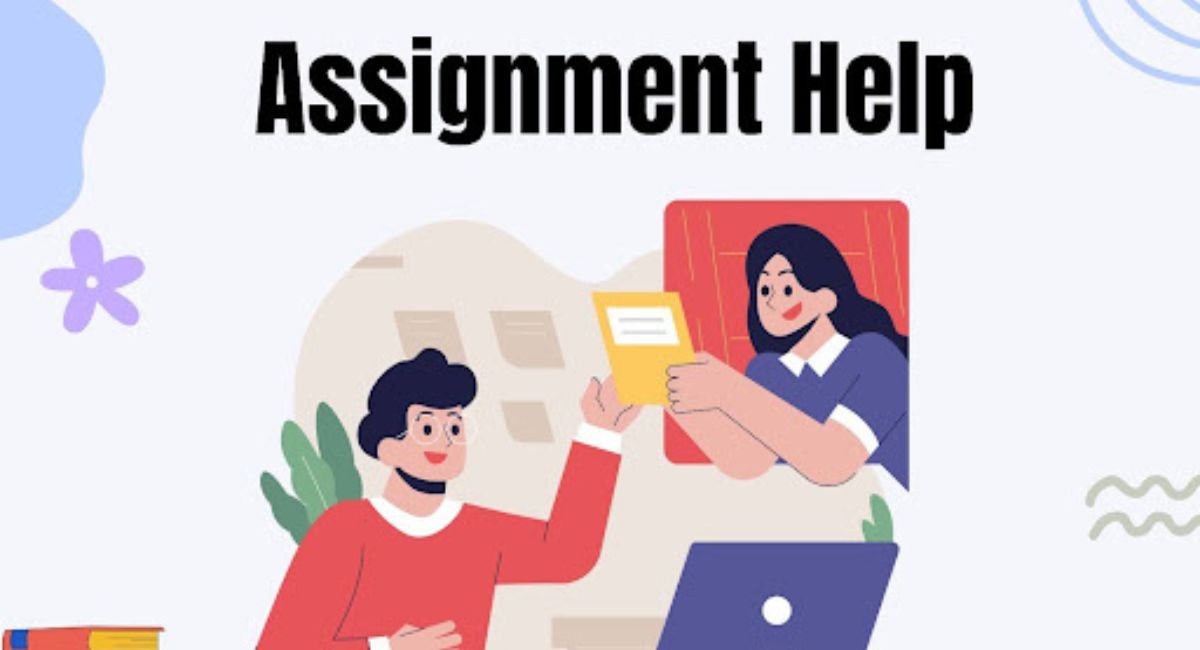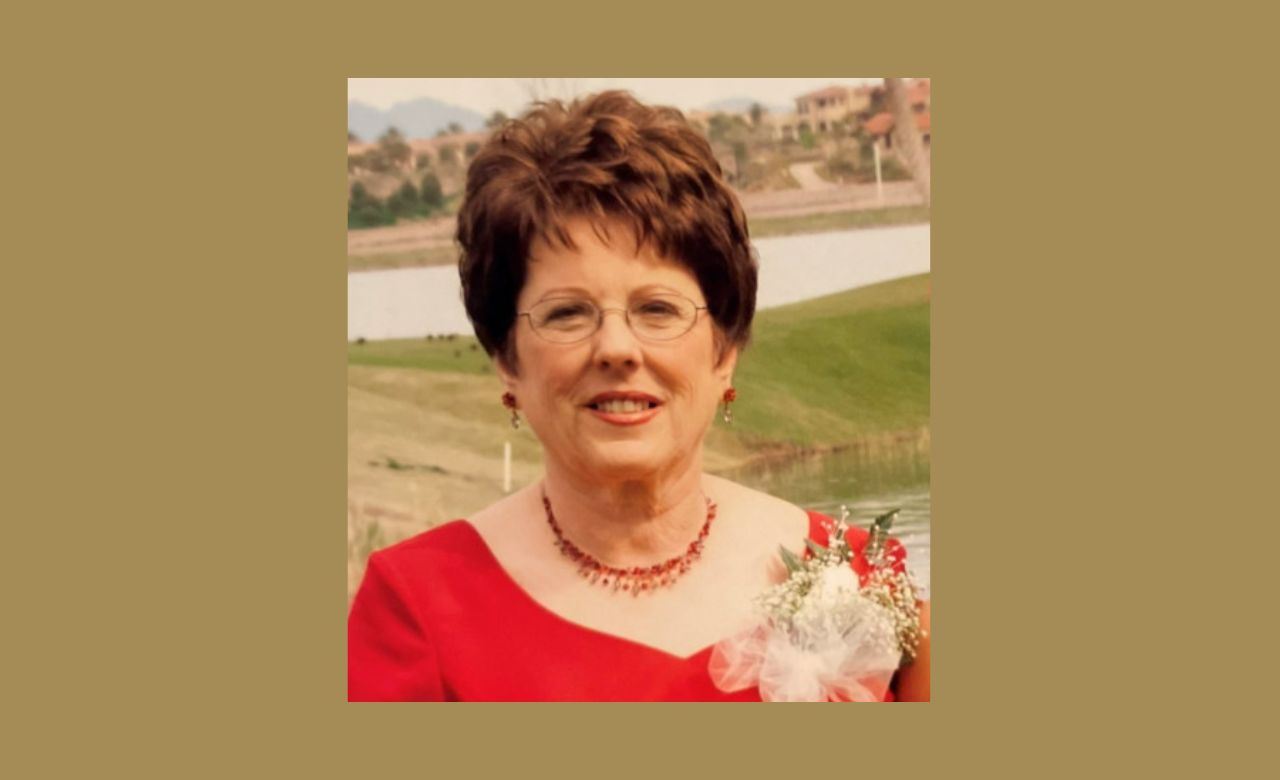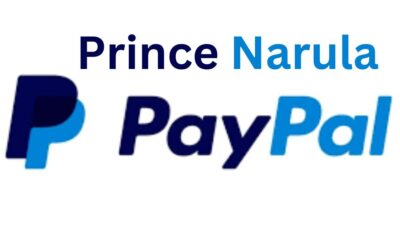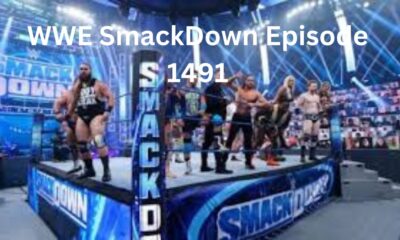EDUCATION
A Comprehensive Guide to the GED Practice Exam: Understanding the Content and How to Prepare

The GED (General Educational Development) test is designed to provide individuals who did not complete high school with the opportunity to earn an equivalent credential. This exam tests your knowledge in several core subject areas, evaluating whether you have the skills and understanding typically gained during high school. To ensure success, preparing with a GED practice exam is one of the most effective ways to build confidence and assess your readiness.
In this article, we will break down the content of the GED exam and provide tips on how to best prepare for it.
Understanding the GED Exam Structure
The GED test is composed of four main subject areas: Mathematical Reasoning, Reasoning Through Language Arts, Social Studies, and Science. Each section is designed to assess your knowledge and problem-solving skills, requiring a thorough understanding of the material and the ability to apply it in various contexts.
Mathematical Reasoning
The Mathematical Reasoning section of the GED covers a range of math topics that you would have encountered in high school. The questions are a combination of multiple-choice, fill-in-the-blank, drag-and-drop, and extended-response formats. You will have access to a calculator for part of this section.
Key areas tested in Mathematical Reasoning include:
- Algebraic problem-solving: Solving equations, interpreting graphs, and understanding linear inequalities.
- Quantitative problem-solving: Percentages, ratios, and geometric calculations such as area and volume.
- Data analysis: Understanding how to read charts, graphs, and tables, and using this information to solve problems.
Reasoning Through Language Arts
The Reasoning Through Language Arts (RLA) section evaluates your ability to read and comprehend written texts, as well as your writing skills. This part of the exam includes reading comprehension questions, grammar and language usage, and a writing task where you will draft an extended response or essay.
Key areas tested in the RLA section include:
- Reading comprehension: Understanding and analyzing passages from both fiction and non-fiction works.
- Writing mechanics: Grammar, sentence structure, punctuation, and proper word usage.
- Essay writing: You will be required to write an extended response on a given topic, demonstrating your ability to construct a well-organized argument with supporting evidence.
Social Studies
The Social Studies section focuses on history, geography, civics, and economics. It tests your ability to read and interpret graphs, charts, and texts related to social studies concepts.
Key areas tested in Social Studies include:
- U.S. history: Significant historical events, movements, and figures in American history.
- Civics and government: The structure and functions of the U.S. government, constitutional principles, and rights of citizens.
- Geography and the world: Understanding world events, global geography, and how societies interact on a global scale.
- Economics: Basic economic principles such as supply and demand, market structures, and the role of government in economic systems.
Science
The Science section of the GED tests your ability to understand and apply scientific concepts in areas such as life sciences, physical sciences, and earth/space sciences. You’ll need to read and interpret scientific data, graphs, and diagrams, and apply your knowledge to solve problems.
Key areas tested in Science include:
- Life science: Human biology, genetics, and ecosystems.
- Physical science: Chemistry and physics principles, such as matter, energy, and the laws of motion.
- Earth and space science: Earth’s systems, the solar system, and environmental science topics like climate change and conservation.
Importance of Taking a GED Practice Exam
A GED practice exam is an essential tool to help you prepare for the actual test. It offers multiple benefits that will improve your performance on the GED and increase your chances of passing on your first try.
Familiarity with the Test Format
The GED exam has a specific format and includes various question types, such as multiple-choice, short answer, and extended response. Taking practice exams gives you a feel for the structure of the test, helping you understand how questions are phrased and how to approach them effectively.
Building Confidence
By practicing regularly, you become more familiar with the types of questions asked and the pacing required to complete each section within the time limit. This helps build confidence and reduces anxiety when taking the actual exam.
Identifying Strengths and Weaknesses
One of the biggest advantages of taking a GED practice exam is that it highlights your strengths and weaknesses. After completing the practice test, you can analyze your performance and determine which areas need more study, allowing you to focus your preparation on the topics where you need improvement.
Effective Strategies for Preparing for the GED Exam
Preparation is key to passing the GED exam, and it’s important to develop a study plan that targets all four subject areas. Here are some effective strategies for preparing:
Set Up a Study Schedule
Consistency is essential when preparing for the GED exam. Create a study schedule that allows you to dedicate time to each subject area on a regular basis. Focus on one or two sections each day, and make sure to allocate more time to subjects where you feel less confident.
By sticking to a schedule, you’ll ensure that you cover all topics thoroughly and avoid last-minute cramming.
Use GED Study Guides and Materials
Using GED study guides and textbooks is a great way to review important concepts and practice exam questions. These materials often follow the structure of the actual test, covering all four subjects in detail and providing sample questions and explanations to help you better understand the material.
There are also online GED prep resources that offer video tutorials, flashcards, and additional practice tests.
Take Practice Tests Regularly
Taking multiple GED practice exams is one of the most effective ways to gauge your progress and ensure you’re ready for the real test. Practice tests help you assess your time management skills and expose you to a variety of question types, ensuring that you’re comfortable with the exam format.
Make sure to take practice tests under timed conditions to simulate the pressure of the actual exam.
Focus on Critical Thinking Skills
The GED exam is not just about memorizing facts—it’s about applying knowledge to real-world problems. For example, in the science and social studies sections, you’ll need to interpret data, analyze charts, and make informed decisions based on the information provided. Focus on critical thinking skills by practicing how to draw conclusions from evidence and apply theoretical knowledge to practical situations.
Test Day Tips for the GED Exam
On the day of your GED exam, staying calm and focused is essential. Here are some tips to help you perform your best:
Get a Good Night’s Rest
Ensure that you are well-rested before the test. A good night’s sleep will improve your concentration and help you think more clearly during the exam. Avoid cramming the night before, as this can lead to burnout and anxiety.
Arrive Early
On the day of your GED exam, arrive at the testing center early to avoid any last-minute stress. Bring all the necessary materials, such as your photo ID and any testing supplies required by the center.
Stay Calm and Manage Your Time
Remember that the GED exam is timed, so it’s essential to pace yourself during the test. If you come across a difficult question, don’t spend too much time on it—move on to the next question and return to it later if time permits. Stay calm, take deep breaths if you feel anxious, and focus on answering one question at a time.
Conclusion
The GED practice exam is an invaluable resource for anyone preparing to take the GED test. By understanding the content of each subject area—Mathematical Reasoning, Language Arts, Social Studies, and Science—you’ll be better equipped to tackle the exam with confidence. Practice exams are key to familiarizing yourself with the format, building confidence, and identifying areas for improvement.
Preparation for the GED should include a structured study plan, the use of reliable study materials, and regular practice tests. This will ensure that you cover all the necessary topics while honing your critical thinking and time management skills. With dedicated preparation, you’ll feel more confident and ready to pass the GED on your first attempt.
Ultimately, the GED exam is more than just a test—it’s a stepping stone to new educational and career opportunities. By thoroughly preparing for a GED practice exam and studying effectively, you’ll be well on your way to earning your certification and opening the door to a brighter future.

EDUCATION
How to Write a CV That Will Stand Out to Employers

When entering the job market, one of the most important tools at your disposal is your CV (curriculum vitae). It’s your first opportunity to impress a potential employer, so making it stand out is crucial. Whether you’re applying for your first job, an internship, or a graduate position, crafting a compelling CV can make all the difference.
A well-written CV doesn’t just list your qualifications – it tells your professional story in a way that shows employers why you’re the right fit for the role. In today’s competitive job market, knowing how to write a CV that stands out is essential for success.
If you are suffering from a crisis in workload or multi-jobbing across many applications, then assignment help will guide you to write the ideal CV, so your job application is as capable as your education. In this highly educative guidebook, we shall dissect each and every component of the ideal CV into pieces and also offer you practical advice on how to lead your desired profession.

Why is a CV so significant?
A CV is, of course, an advertisement. It’s your opportunity to market yourself, your skill, your experience, and your potential on a few tight but clear pages. Employers will be reviewing hundreds of CVs, so make yours stand out from the start. An effective CV allows the recruiters an opportunity to familiarise themselves at once with the reasons why you are the most appropriate individual for the job and how you can benefit the organisation.
Key Strengths of a Successful CV:
Explain your professional skill and qualifications.
Emphasizes your experience and success.
Provides evidence of your capability in tangible outcomes by demonstrating what you can produce.
Keeps your interview attitude upbeat by being enthusiastic about your professionalism and personality.
Let us now create a CV that will make you a top employer contender.
Key Ingredients of a Good CV
When you are building your CV to be effective, interesting, and businesslike, you must highlight several key attributes. These must be ranked in priority order and readily available so that potential employers can browse through at ease at first glance.
1. Personal Details and Contact Details
Placing your name, professional title (if any), phone number, and email address at the top of your CV, you may also put in a link for your LinkedIn profile or professional portfolio if needed.
- Name: Type in your full name.
- Phone Number: Update this number.
- Email Address: Type in a business email address (do not type nicknames or personal email addresses that are not professional).
- LinkedIn/Portfolio: If needed, type it in.
Make it concise and formal. Leave out such information as your home address, which is not needed on most contemporary CVs.
2. Personal Statement / CV Summary
Your personal statement or overview should be followed by your contact details. The brief paragraph gives you a chance to introduce yourself and inform potential employers what you can do. Mention your experience, skills, and career aspirations and relate it to the job for which you are applying.
How to Write a Good Personal Statement:
- Make it short: Keep it in 4-5 lines.
- Make it job-specific you are applying for: Describe your skills in the language used in the job you are applying for.
- Call out for positive strengths: Mention your best strengths, perhaps problem-solving ability, leadership ability, or technical ability.
- Avoid cliches: Use vague buzzwords “hard” and “team player” only if you can demonstrate them in a practical example.
For example, if you’re applying for a marketing role, your personal statement could highlight your experience with campaigns, digital marketing, and data analysis.
3. Education and Qualifications
Your education section should describe your education in reverse chronological order, beginning with the most recent qualification. You should include the name of the school of education, study duration, and degree or qualification completed. Graduates can also include major modules or areas of study major.
As a student, include your date of graduation and courses or study projects that would appeal to the employer.
What to Include:
- Name of institution (or secondary school if you are fairly new in the profession)
- Title of degree (e.g., BS in Business Administration)
- Dates attended
- Most important accomplishments or most important coursework
If it seems overwhelming to balance studying and having your CV just so, assignment help will keep you churning out assignments on time while you go on and focus on career hunting.
4. Professional Experience
The work experience section is your best section in your CV. It is the place where you will outline your work history and demonstrate future employers how your skills in practice can be transferred. List your current job at the top, and add any part-time work, internships, or volunteer posts.
For every job, state:
- Job title: State what job you were doing.
- Company name: Give the company or organisation name.
- Dates of employment: Give your dates of employment.
- Key tasks and outcomes: Outline what you did in the job and any personal projects or outcomes.
Tips for presenting your Experience:
- Begin each bullet with a verb (i.e., managed, created, implemented).
- Put figures on your outcomes wherever appropriate (e.g., “Increased sales by 20%” or “Managed 5-strong team”).
- Highlight prior experience: If you have a series of employments, highlight the most relevant ones to the job you are applying for.
5. Skills Section
Your skills section should be a mix of hard (technical) and soft (people) skills. Ensure that these are career-specific to the career that you are competing for, and don’t use broad statements that you can’t possibly fulfill.
Hard Skills
These are the technical work skills or the know-how to do the job, i.e., computer programming, language, or equipment (e.g., Microsoft Excel, HTML, or data analysis).
Soft Skills:
These are personal qualities that enable you to survive in a workplace, i.e., communication, teamwork, or management.
6. Certifications and Additional Training
If you have any professional development course, training, or certification that is relevant to the job, place it here. It could be workshop certificates, online courses, or any other certificate that makes you qualified for applying for a specific job.
7. Additional Information
– Place here any other information that makes you qualified for the job. This can be:
- Languages spoken: If you are multi-lingual, do not hesitate to include it.
- Volunteer work: Any volunteer work that is relevant to the job, include here.
- Awards or honors: Any awards or honors you have won, include here.
8. References
References are not always required to be included on your CV, but it’s a good idea to have a list of individuals who can vouch for your skills and personality. This will usually be an ex-employer, mentor, or academic supervisor.
Presenting Your CV
Presentation is as crucial as the content. A hard-to-read CV will lose an employer’s interest in no time. Follow these presentation guidelines:
Use a clear, professional design:
- Don’t use fancy colours or fonts. Use traditional fonts such as Arial, Calibri, or Times New Roman.
- Keep it short: Your CV should ideally be 1-2 pages, particularly if you’re just starting out.
- Use bullet points: These make your CV easy to scan and bring out your major accomplishments.
Final Tips to Make Your CV Stand Out
Customize your CV for every application: Don’t have a generic one. Customize your CV to match the job you’re applying for by emphasizing applicable experience and skills.
Proofread thoroughly: A spelling or grammar mistake can make you look amateurish. Carefully proofread your CV before submitting it.
Be truthful: Never overstate or misrepresent your qualifications or experience.
Conclusion: Make the Most Out of Your CV
It is a challenge to produce an exceptional CV for employers, but the reward is more than worth it. By highlighting concise presentation, relevant experience, and job-specific skills, you will make a long-lasting impression on potential employers.
If it’s consuming all your spare time balancing school studies, assignment assistance will provide you with some spare time to devote to making your CV flawless.
For needy students pushing through this stressful but inspirational phase of professional growth, businesses such as Assignment in Need (assignnmentinneed.com) may offer the assistance you need in an attempt to keep up with your school studies and employment searching.
EDUCATION
Why You Should Enroll in a Classical Arabic Course to Understand Ancient Texts

Learning Classical Arabic opens the door to understanding ancient texts, including the Quran, poetry, and historical writings. Enrolling in a Classical Arabic course provides structured learning that helps students grasp the depth and beauty of the language.
Unlike Modern Standard Arabic, Classical Arabic carries the rich vocabulary, grammar, and expressions found in historical literature.
Whether you are a student of Islamic studies, a linguistics enthusiast, or simply someone eager to explore old manuscripts, a Classical Arabic course gives you the foundation to read and comprehend these texts with accuracy.
What is the Classical Arabic Course?
The Classical Arabic Course is a specialized program designed to teach students the fundamentals of the Arabic language as used in the Quran, Hadith, and classical Islamic texts. It focuses on grammar (Nahw), morphology (Sarf), vocabulary, and sentence structure, enabling learners to read, understand, and analyze classical Arabic literature. This course is ideal for those seeking to deepen their comprehension of Islamic scriptures or pursue advanced studies in Islamic sciences.
What Makes a Classical Arabic Course Unique?
A Classical Arabic course differs from other Arabic learning programs because it focuses on the language as it was used centuries ago. It emphasizes grammar, sentence structure, and vocabulary that are no longer commonly spoken but remain essential for reading ancient writings.
Key Features of a Classical Arabic Course:
- Focus on Grammar (Nahw and Sarf) – Understanding the structure of sentences and word formations.
- Reading Classical Texts – Engaging with Quranic verses, Hadith, and poetry.
- Expanding Vocabulary – Learning words and phrases specific to historical writings.
- Understanding Context – Recognizing how words carried different meanings in different eras.
- Mastering Pronunciation – Applying correct pronunciation for reading aloud.
A well-structured Classical Arabic course ensures that students not only learn the language but also develop the ability to analyze and interpret texts with confidence.
Who Should Take a Classical Arabic Course?
Anyone interested in understanding Arabic in its purest form can benefit from a Classical Arabic course. Since this version of the language is primarily used in religious and literary contexts, it attracts students from different backgrounds.
Ideal Students for a Classical Arabic Course:
- Students of Islamic Studies – Those who want to understand the Quran and Hadith in their original form.
- Arabic Literature Enthusiasts – Readers who enjoy poetry and prose from the classical era.
- Linguistics Scholars – Researchers studying the evolution of Arabic.
- Translators and Writers – Professionals working on historical texts and religious scriptures.
- Anyone Interested in Ancient Languages – People fascinated by how language shapes culture and thought.
Enrolling in a Classical Arabic course helps students connect with the richness of Arabic heritage while developing a deeper appreciation for historical writings.
Benefits of Learning Classical Arabic
Studying Classical Arabic is not just about learning a language—it’s about gaining access to centuries of knowledge. A Classical Arabic course provides the tools to explore religious texts, historical accounts, and literary masterpieces.
Why Learning Classical Arabic is Valuable:
- Access to Original Texts – Read the Quran, Hadith, and scholarly works without relying on translations.
- Better Understanding of Islamic Teachings – Study religious texts as they were written.
- Appreciation of Classical Poetry – Enjoy the beauty and rhythm of Arabic poetry.
- Deeper Grasp of Arabic Grammar – Strengthen language skills by learning the original rules.
- Connection to Arabic Heritage – Explore the historical and cultural background of the language.
A Classical Arabic course is a great investment for those who want to explore Arabic beyond everyday communication and engage with the language on a deeper level.
How a Classical Arabic Course is Structured
A well-designed Classical Arabic course follows a structured approach that gradually builds students’ understanding of the language.
Common Course Structure:
- Introduction to Arabic Grammar – Learning essential rules for sentence formation.
- Reading and Understanding Quranic Arabic – Studying Quranic vocabulary and context.
- Exploring Classical Poetry and Prose – Analyzing historical literary works.
- Translation Exercises – Practicing translation from Classical Arabic to English.
- Application through Writing and Speaking – Forming sentences and discussing texts in Arabic.
By following this approach, a Classical Arabic course ensures that students gain confidence in reading and understanding the language in its historical form.
Challenges in Learning Classical Arabic and How to Overcome Them
Classical Arabic can be challenging for beginners, especially due to its complex grammar and unfamiliar vocabulary. However, a well-structured Classical Arabic course provides solutions to make the learning process easier.
Common Challenges and Solutions:
- Difficult Grammar Rules – Learning step by step with practical exercises.
- Unfamiliar Vocabulary – Building a strong word bank through reading classical texts.
- Pronunciation Difficulties – Listening to and practicing recitation.
- Understanding Context – Studying historical background to grasp meanings accurately.
- Staying Motivated – Setting realistic goals and practicing consistently.
A Classical Arabic course provides the necessary support and resources to help students overcome these challenges and progress in their learning.
Conclusion
Enrolling in a Classical Arabic course is the best way to understand the depth and beauty of ancient Arabic texts. Whether you want to read the Quran with deeper comprehension, explore classical poetry, or study historical manuscripts, this course provides the essential skills you need.
With structured lessons, expert guidance, and regular practice, students can gain fluency in Classical Arabic and connect with the rich linguistic heritage of the Arabic language.
EDUCATION
Celebrating Ann Bacon and Her Impact at Tartan High School

Tartan High School has long been a beacon of academic excellence and community spirit, and few people have embodied this ethos more than Ann Bacon. Throughout her tenure, Bacon’s dedication to education and passion for student success have left an indelible mark on the school and its community. This blog post explores her legacy, showcasing the myriad ways in which she has inspired, motivated, and elevated Tartan High School.
The Journey Began
Ann Bacon’s association with Tartan High School began over two decades ago, when she first walked through its doors as a young educator eager to make a difference. Her career trajectory at the school is a testament to her unwavering commitment to excellence in education. From teaching roles to administrative positions, Bacon has worn many hats, each contributing uniquely to the school’s growth. Her early years were marked by a keen interest in curriculum development, where she played a key role in integrating innovative teaching methods that continue to benefit students today.
A Passion for Teaching
Bacon’s passion for teaching was evident from the start. Her classroom was a vibrant space, where students were encouraged to think critically and engage deeply with the subject matter. She believed in fostering a love for learning, which she achieved by creating an environment that was both challenging and supportive. Bacon’s approach was holistic—she sought to nurture not just academic prowess but also the personal growth of each student. Her students often describe her as a mentor who pushed them to explore their potential and pursue their dreams ardently.
Cultivating a Student-Centric Approach
Central to Ann Bacon’s philosophy was the belief that education should be student-centric. She was instrumental in implementing programs that focused on individual learning styles and needs. Recognizing that every student is unique, Bacon advocated for personalized learning paths. Her efforts led to the development of initiatives that provided additional resources and support for students requiring it, ensuring that no one was left behind. These initiatives have set a precedent at Tartan High School, influencing educational policies and practices to this day.
Inspiring Through Leadership
Bacon’s leadership extended beyond the classroom. Her tenure as an administrator was characterized by a forward-thinking approach that emphasized collaboration and community engagement. She championed initiatives that brought together teachers, parents, and community members to work towards common goals. Under her guidance, Tartan High School saw significant improvements in student outcomes and overall school performance. Her leadership style was inclusive—she listened to diverse perspectives and made decisions that reflected the collective vision of the school community.
Innovations in Curriculum Development
Ann Bacon was a staunch advocate for curricular innovation. She understood the importance of keeping the curriculum relevant and engaging, adapting it to meet the changing demands of the world. Her work in curriculum development resulted in the introduction of new subjects and interdisciplinary courses that have enriched the educational experience at Tartan High School. Bacon’s efforts ensured that students were not only academically prepared but also equipped with critical thinking and problem-solving skills essential in today’s world.
Building a Culture of Excellence
Creating a culture of excellence was one of Ann Bacon’s primary goals. She believed that excellence should be pursued in all aspects of school life, from academics to extracurricular activities. Bacon encouraged students and staff to strive for their best, providing them with the tools and support needed to succeed. Her influence has been instrumental in establishing Tartan High School as a top-performing institution known for its rigorous standards and high-achieving students.
Championing Extracurricular Activities
Bacon recognized the value of extracurricular activities in a well-rounded education. She was a staunch supporter of sports, arts, and clubs, understanding that these activities played a crucial role in student development. Under her leadership, Tartan High School expanded its extracurricular offerings, providing students with numerous opportunities to explore their interests and talents. Her initiatives have helped cultivate a vibrant school culture where students can thrive in multiple arenas.
Community Engagement and Outreach
Engaging with the community was a hallmark of Ann Bacon’s approach. She believed that a strong partnership between the school and the community was vital for the success of both. Bacon fostered relationships with local businesses, organizations, and alumni, creating a network of support for Tartan High School. Her outreach efforts have resulted in numerous collaborations, bringing additional resources and opportunities to the school and its students.
Mentorship and Professional Development
Ann Bacon was not only dedicated to her students but also to her colleagues. She placed great emphasis on mentorship and professional development, believing that a well-supported teaching staff was crucial to student success. Bacon organized workshops, training sessions, and mentorship programs, fostering a culture of continuous learning among educators. Her efforts have empowered countless teachers, enabling them to enhance their skills and deliver high-quality education.
Impact on Alumni and Beyond
The impact of Ann Bacon’s work extends far beyond the walls of Tartan High School. Her former students, now alumni, frequently credit her influence as pivotal in their personal and professional journeys. Many have gone on to achieve significant accomplishments, carrying forward the values and lessons instilled by Bacon. Her legacy continues to inspire new generations, as alumni remain actively engaged with the school, contributing to its ongoing success.
A Legacy of Dedication and Excellence
Ann Bacon’s legacy at Tartan High School is one of unwavering dedication and a steadfast commitment to excellence. Her work has transformed the school, leaving a lasting impact on students, staff, and the broader community. Her vision for a student-centric, innovative, and community-oriented educational environment has set a standard that continues to guide the school’s mission and values.
Conclusion
As Tartan High School continues to evolve, it does so on the strong foundation laid by Ann Bacon. Her legacy serves as a reminder of the profound impact one individual can have on an institution and its community. For those looking to further explore the remarkable contributions of Ann Bacon, Tartan High School offers numerous resources and opportunities for engagement. Join us in celebrating and continuing the work of a true educational pioneer.
-

 BUSINESS24 hours ago
BUSINESS24 hours agoPrince Narula Digital PayPal Success: Transforming Online Payments
-

 ENTERTAINMENT24 hours ago
ENTERTAINMENT24 hours agoHighlights and Analysis: WWE SmackDown Episode 1491 Recap
-

 ENTERTAINMENT11 months ago
ENTERTAINMENT11 months agoWWE SmackDown Episode 1488 Delivers a Knockout Performance
-

 LAW9 months ago
LAW9 months agoAn Intriguing Journey into the Life of Jeff Tietjens
-

 videos9 months ago
videos9 months agobad hair day episode 1 a sore subject
-

 HOME1 year ago
HOME1 year agoMaximizing Basement Space: Design Tips from Top Basement Renovation Contractors
-

 CELEBRITY2 years ago
CELEBRITY2 years agoDiscovering Edgardo Canales The Life and Journey of Adria Arjona’s Husband
-

 News1 year ago
News1 year agoNews JotechGeeks Takes the Spotlight in Tech News World